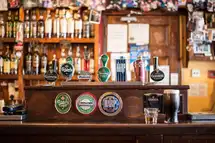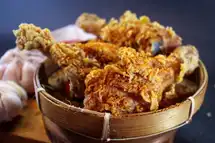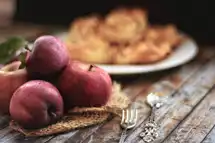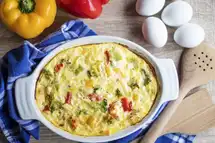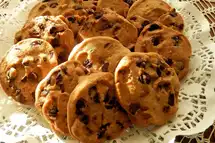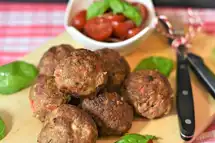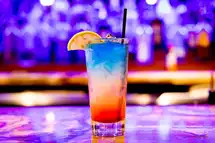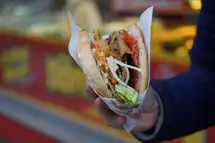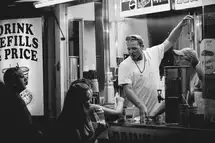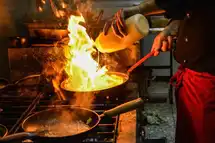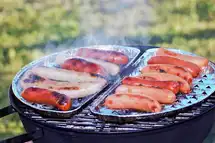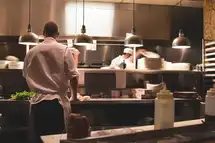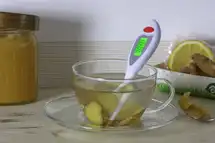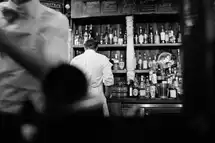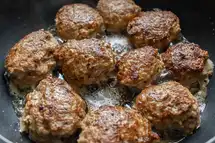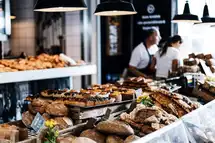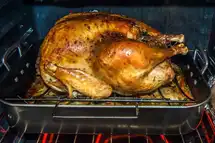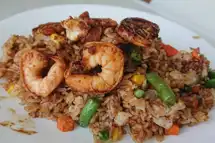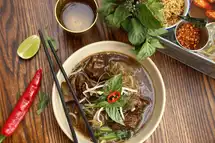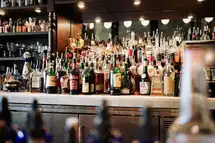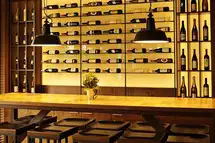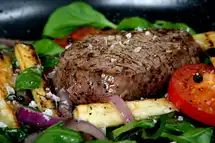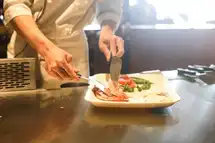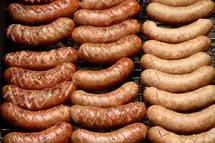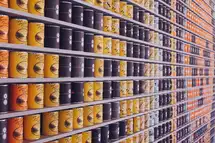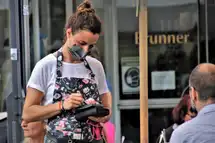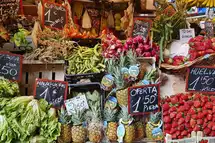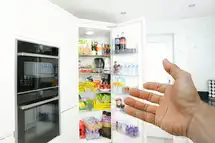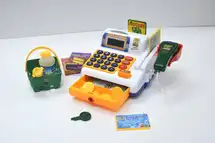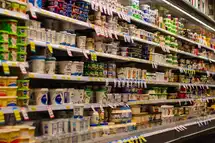What is cold food temperature?
There is no definitive answer to this question as it depends on the type of food being stored. However, a general guideline is that cold food should be kept at temperatures below 40F (4C).
How to Keep Your Food Safe With a Hot and Cold Food Temperature Chart
Food Temperature and Food Safety - What's the Connection?
Foodborne illness affects one in every six people in the US every year, the Centers for Disease Control and Prevention (CDC) points out. More specifically, almost 48 million annual cases of domestically-contracted foodborne illness are reported in America, resulting in nearly 128,000 cases of hospitalization, and more than 3,000 fatalities.
One of the ways in which this grim situation can be handled is by controlling food temperature. Bacteria and other harmful microorganisms reproduce slowly in cold temperatures, and proliferate at mid-level temperatures. High temperatures, on the other hand, prove fatal for microbes.
The temperature range of 40 degrees Fahrenheit to 140 degrees Fahrenheit is the danger zone for food.
Foods that are not cooked/reheated to safe temperatures, not stored at the right temperatures, and not properly refrigerated, are breeding grounds for pathogens like e. coli, salmonella, norovirus, and so on.
Certain food items like meat, poultry, fish, eggs, milk, baked potatoes, leafy greens, melons, milk products, sprouts, cooked rice, and sprout seeds are highly prone to infestation by microbes. These products, therefore, require particularly strict time and temperature control.
Food poisoning can cause diarrhea, vomiting, and fever. Children, pregnant women, elderly people, and those with weak immune systems are especially susceptible to it.
What is the Danger Zone?
The temperature range of 40-140 F is widely held to be the danger zone for food. The Food Safety and Inspection Service (FSIS) of the United States Department of Agriculture (USDA) identifies this temperature range as one in which it takes bacteria just 20 minutes to double in number.
On the other hand, ServSafe, which is the National Restaurant Association's training and certification program on food safety, puts the food temperature danger zone in the 41-135 F range.
Within the food temperature danger zone, temperatures between 70 F and 125 F are considered to be particularly hazardous, providing conditions that are conducive for pathogen growth.
To avoid bacterial growth, perishable foods must be cooked/reheated to an adequately high internal temperature and stored at the right cold temperatures. Undercooking may cause pathogens to linger.
In order to maintain safe food temperatures, a food thermometer is essential. This is especially so since microbial activity can't always be detected through smell, touch, or sight.
If you want to keep your food safe, you need to know what temperatures to keep it at.
That's where a hot and cold food temperature chart comes in handy. Here are the guidelines you need to know.
What are Food Hazards and How Can They be Controlled?
Risks to food come from several quarters. Pathogens like bacteria, yeast, mold, viruses, and parasites constitute biological hazards. Then there are physical hazards like human hair, pest droppings, bird feathers, animal fur, pieces of metal, jewelry, glass, dead insects, etc. Chemical hazards include insecticides, cleaning agents, pesticides, detergents, food additives, and so on. Food may contain allergens as well, which render it unsafe. These are substances that cause allergic reactions in those eating it.
Food allergies, which result from the body reacting to certain food proteins, can be life-threatening. This makes the avoidance of allergens absolutely imperative. Nine major food allergens are identified in the US. These are milk, fish, eggs, crustacean shellfish, peanuts, tree nuts, wheat, sesame, and soybeans.
The US Food and Drug Administration (FDA) requires businesses to declare ingredients used in packaged foods and beverages, to protect consumers from food-related hypersensitivities. However, if undeclared allergens are found, the FDA coordinates with businesses to recall the affected products, and issue public alerts. The FDA may also confiscate and remove products from the market, and bar the entry of allergen-containing imported products.
Businesses can control food hazards by following food safety management systems, or systematic approaches that ensure the safety and quality of food products from the farm to the fork.
Restaurants implementing a food safety program like the Hazard Analysis Critical Control Point (HACCP), in this regard, are well-placed to keep food hazards at bay. The HACCP principles allow biological, physical, and chemical hazards to be analyzed and controlled.
HACCP is strict about adherence to personal hygiene; safe minimum internal cooking temperatures; proper cleaning, sanitation, and sterilization; and separation of cooked and raw items. If food safety breaches occur, the HACCP principles suggest corrective steps.
What are Critical Limits?
A vital step for controlling food hazards and ensuring food safety involves the identification of critical control points and setting critical limits.
A critical control point, in this regard, refers to the stage at which an organization can exert control to ward off or eliminate food safety hazards or reduce them to a manageable level. A critical limit, on the other hand, is the minimum or maximum extent to which a biological, physical, or chemical parameter ought to be controlled at a critical control point so that food safety hazards can be effectively addressed.
There may be one or more control initiatives at each critical control point, and each control initiative is linked to one or more critical limits. Accordingly, cooking is a critical control point, and heating may be a control initiative for eliminating germs. A critical limit related to this control initiative states that beef should be heated to 145 F during cooking to make it safe.
Indeed, there may be various factors that determine critical limits, namely time, temperature, moisture level, humidity, water activity, titratable acidity, pH, salt concentration, viscosity, available chlorine, presence of preservatives, physical dimensions, or sensory information like visual appearance and aroma.
Examples of critical limits are provided in the subsequent sections.
Critical Limits for Incoming Stock
When stocks arrive, check if the delivery truck has stored the supplies at the proper freezer and refrigeration temperatures. Don't accept the supplies if you discover that the temperatures are not right, because there's no way for you to know how long your food products have been languishing in the temperature danger zone.
If you find cartons damaged, check if the contents are in order. Look for leakage in cartons carrying bottles and jars. Check all unsealed and repacked cartons.
Look for swollen or bulging cans, which would indicate that their contents are spoiled. Big dents on cans may mean split seams and contamination of food.
Dairy products are highly perishable and must not be stored for too long. The expiry date on each container must be thoroughly checked.
In the case of farm products, make sure they are fresh and ripe. In the cases of seafood and meat, poultry, check for freezer burns, partial thawing, torn wrappings, and so on.
You want to follow the correct food safety guidelines to make sure your customers are served safe food.
Start by following the right temperature guidelines. This chart will help you out.
Critical Limits for Storage
Critical limits for food storage include keeping the food at 50-59 F, and ensuring that the storage area is dry. Care should be taken to avoid the decay and swelling of canned products.
Foods should be stored in refrigerators below 40 F. Milk products need to be refrigerated between 36 F and 39 F. This is the temperature range at which most farm products also need to be refrigerated to keep them fresh. However there are some exceptions, like bananas and potatoes, that must be kept at higher temperatures.
Fruits can be ripened at temperatures of 50-59 F in the storehouse. Refrigeration substantially slows down the pace of ripening. Soft fruits, moreover, should not be stored for too long.
Decaying fruits can affect fresh ones too, and it is essential to discard rotting fruit. Be mindful of unique storage requirements. For instance, bananas kept in the refrigerator can quickly turn black. The ideal temperature range for storing bananas is 50-59 F.
Farm produce can be safely stored for varying durations. For instance, delicate products like lettuce are not suited for long storage and should be bought and consumed fresh, whereas hardy vegetables like cabbage and carrot can last several weeks.
As far as meat is concerned, store carcass meats in a walk-in refrigerator at 34-37 F. However, don't store fresh meat for a long time, and boned meat must not be stored for more than three days. Use individual cuts of meat ideally on the day of cutting, and no later than two days. Keep individual cuts of meat like chops, steaks, stewing meat, and ground meat covered in stainless steel or plastic trays at temperatures of 36-39 F.
Fresh poultry, on the other hand, needs to be packed in ice and refrigerated. Fresh seafood also needs to be packed in ice. The ideal storing temperature for seafood is 30-34 F.
Store frozen food at or below 0 F.
Tips for Prep
In order to keep your Food Safe , especially during handling and preparation, follow strict cleanliness and sanitation standards.
Use hot, soapy water frequently to wash your hands and material surfaces. Make hand-washing a habit particularly before and after you handle utensils or food, especially raw meat, poultry, eggs, and fish. All vegetables and fruits must be washed before being consumed.
Keep raw food separate from cooked and ready-to-eat meals to avoid cross-contamination. As far as possible, keep the cutting boards for raw meat, poultry eggs, and fish separate. Wash cutting boards thoroughly with soap and water between tasks.
Make sure to cook food items to their recommended safe temperatures, and regularly monitor temperatures using a food thermometer.
It is also imperative to keep cold foods cold (at temperatures lower than 40 F), and hot foods hot (at temperatures over 140 F). Place food in the refrigerator within two hours of preparation or purchase. If the ambient temperature of the place where food is being handled is over 90 F, refrigerate food within an hour.
Consume cooked leftovers within four days. However, discard food lying at room temperature for over two hours.
Critical Limits for Cooking
Cook food to safe internal temperatures so that pathogens can be eliminated. The FDA and FSIS provide detailed charts specifying cooking temperatures and rest periods for various kinds of food. Rest period refers to the amount of time that food items are required to remain at a certain temperature after they are removed from the source of heat.
Let's now look at the recommended internal cooking temperatures and rest times for different food items.
If you are cooking beef, lamb, veal, or pork as steaks, roasts, and chops, the Meat Temperature that you need to achieve is 145F, along with three minutes of rest time. The same criterion is required for uncooked ham, which is smoked or fresh. However, ham that has been cooked fully and packaged in plants inspected by the USDA just needs to be reheated to 140 F. If the ham had been repackaged at an external plant and if you are dealing with spiral-sliced leftover hams, the reheating temperature required is 165 F.
Finfish also needs a minimum cooking temperature of 145 F. You know it is fully cooked when the flesh becomes opaque can be pulled apart easily.
A minimum internal temperature of 160 F is required for ground meat and egg dishes. Cook eggs until the whites and yolk become firm.
The safe Cooking Temperature for turkey and poultry products like whole birds, breasts, thighs, ground poultry, wings, legs, stuffing, and giblets is 165 F. This standard applies to casseroles and leftovers too.
Clams, mussels, and oysters need to be cooked in a way that their shells open up; and crabs, shrimps, and lobsters must be cooked till they turn opaque and pearly.
Tips for Cooling
Potentially hazardous foods require proper cooling to ensure Disease Control. Foods cooling slowly would linger too long in the temperature danger zone.
Temperature and time are two quantifiable parameters on the basis of which food can be cooled. Food needs to be first cooled within two hours from 140 F to 68 F. Then in the next four hours, cool it further, from 68 F to 40 F.
The type of food involved determines the method used for cooling and the cooling time. Items that are thick and in large quantity require a longer time to cool than lighter food in smaller quantity. Moreover, some cooling techniques are more effective with solid or liquid items.
Critical Limits for Reheating
Reheating increases the internal temperature of food by microwaving or putting it on another source of heat. This serves to remove disease-causing germs from leftovers.
Accordingly, reheat leftovers to 165 F. Hold the temperature for at least two minutes. Stir the food while reheating to ensure uniform distribution of heat. Utensils used for reheating should be different from those used for hot holding.
Reheating can technically be done more than once, but ideally, it should be done just once because reheating food again and again tends to reduce the natural flavors and nutritional value of the food.
If you are looking to handle foods that have been cooked and cooled, but are particularly vulnerable to microbes, reheat in such a way that all parts get heated to 165 F for 15 seconds. These products must be reheated no later than two hours after removing from the fridge. Stir the food, cover it, and allow it to rest for two minutes for the reheating to be effective.
An aspect of food handling related to reheating is thawing. It should be done in the fridge, in a microwave oven, while cooking, or in cold water, but never at room temperature.
Critical Limits for Hot Holding
Hot food products need to be maintained at temperatures beyond the danger zone. If the USDA-recommended food temperature danger zone upper limit is considered, hot holding of food should essentially be done at 140 F and above. However, if you take ServSafe's definition of the food temperature zone into account, you need to hold hot food at temperatures of 135 F and higher.
Use warming trays, slow cookers, and chafing dishes to serve or keep your food hot.
Keeping food covered ensures that temperatures can be controlled and pollutants can be avoided. Don't mix food held for serving with freshly-cooked food. Food lying for over four hours at temperatures lower than 135 F would cease to be safe food.
Critical Limits for Cold Display
For displaying cold foods, the temperature that needs to be maintained is 41 F or lower. Food items that have been lying at temperatures above 41 F, for less than two hours, don't need to be discarded. However, you must consume the food right away, or transfer it to the refrigerator without delay. If food has been held at temperatures above 41F and for over two hours but less than four hours, consume it immediately. However, if food has been sitting for over four hours at temperatures higher than what is recommended, it becomes unsafe to eat.
Cold holding of food needs to be done at temperatures of 40 F or lower. If cold food items are consumed within two hours, platters holding the food can be kept on ice to prevent the temperature from rising.
Cold foods need to be used within six hours of being taken out of the refrigerator. The temperature of cold foods needs to be monitored every two hours and, if the temperature of the food rises above 70 F, the food cannot be consumed.
You've just opened a new restaurant and you need to train your staff on the right food safety protocols.
The first step is maintaining correct food temperatures. This blog tells you what you need to know.


